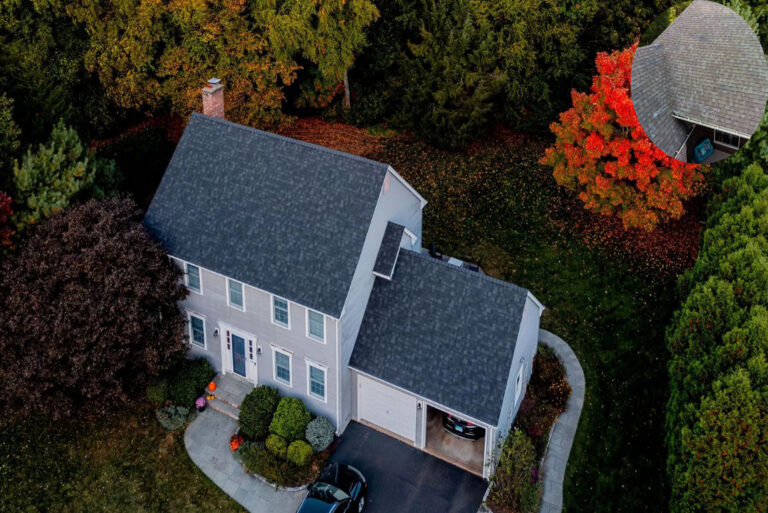Buying a new home is one of the most significant investments most people ever make. As exciting as it is, it also comes with its fair share of responsibilities and considerations. One of the often-overlooked aspects of homeownership is understanding warranties, particularly those associated with the roof.
A roof warranty is more than just a piece of paper—it’s a safeguard against expensive repairs and replacements. But what happens when you buy a home with an existing roof warranty in place? Does the roof warranty transfer to the new owner’s house?
What Is a Home Warranty?

Home warranties are protection plans designed to cover the repair or replacement costs of key home components. They offer financial security for new homeowners and ensure that they’re not left footing the bill for unexpected breakdowns. But what exactly do they cover, and why are they so important?
Types of Home Warranties
- Roof Warranties: Designed to cover issues related to materials, artistry, or installation errors.
- Appliance Warranties: Covers essential items like dishwashers, refrigerators, and ovens.
- System Warranties: Protect mechanical systems, including HVAC, plumbing, and electrical systems.
Why Roof Warranties Matter
The roof is one of the most expensive parts of a home to repair or replace. Roof warranties often cover the following:
- Material Defects: Issues with shingles, underlayment, or other roofing materials.
- Workmanship Errors: Mistakes made during the installation process.
Without a warranty, roofing repairs can cost thousands of dollars. This makes understanding and transferring warranties essential for protecting your investment.
Understanding Roof Warranties

Roof warranties can be complex, particularly since they come in various forms and include specific limitations. Let’s break them down to make them easier to understand.
You may also read (can i use my home equity as a deposit when i move).
Types of Roof Warranties
- Manufacturer Warranties: These cover defects in roofing materials and materials used in the construction process. For example, if shingles crack prematurely or fail to perform as advertised, a manufacturer warranty would cover the cost.
- Contractor or Workmanship Warranties: These warranties cover errors made during the installation process. If the roof leaks due to improper installation, the contractor warranty steps in.
Typical Coverage and Duration
Roof warranties vary in duration:
- Manufacturer Warranties: Often last between 15 and 50 years, depending on the product.
- Contractor Warranties: Generally shorter, lasting 2 to 10 years.
Common Exclusions
Many roof warranties include exclusions, such as:
- Damage caused by neglect or improper maintenance.
- Issues resulting from natural disasters, such as hurricanes or earthquakes.
- Unapproved modifications to the roof.
Understanding these exclusions is crucial to knowing what is covered and what is not.
Does a Roof Warranty Transfer to a New Owner of a House?

The big question: When buying a home, can the roof warranty transfer to you as the new owner? The answer is not always straightforward—it depends on the type of warranty and the terms set by the manufacturer or contractor.
Types of Transferable Warranties
- Manufacturer Warranties: These are often transferable but may come with conditions.
- Contractor Warranties: Some contractors allow transfers, but this is less common than with manufacturer warranties.
The One-Time Transfer Rule
Most roof warranties include a one-time transfer clause, which allows the original homeowner to transfer the warranty to the next owner, but this is the extent of the transfer. Subsequent owners are usually not eligible for the warranty.
Time Limits for Transfer
Manufacturers often require the warranty to be transferred within a specific time frame, such as:
- Within 30 to 90 days of the home’s sale.
- Within the first year of ownership.
Failing to meet these deadlines usually voids the transfer eligibility.
Non-Transferable Warranties
In some cases, warranties are non-transferable. For instance:
- Contractor warranties may not be transferable if the homeowner fails to follow maintenance requirements.
- Manufacturer warranties can be voided if the roof has been altered or improperly maintained.
How to Transfer a Roof Warranty: Step-by-Step

Transferring a roof warranty might seem complicated, but it’s a straightforward process if you follow these steps:
Review the Warranty Contract
- Check the original warranty document for a transferability clause.
- Note any transfer deadlines or fees that apply.
You may also read (elevate your home mounting a cupola on metal roof).
Notify the Manufacturer or Contractor
- Contact the roofing manufacturer or contractor immediately after purchasing the home.
- Let them know you want to initiate the warranty transfer process.
Provide Required Documentation
- Proof of homeownership (e.g., deed or title).
- Original warranty documents.
- Installation and maintenance records.
Pay Transfer Fees
- Some manufacturers charge a transfer fee, typically ranging from $50 to $150.
Confirm the Transfer
- Once you’ve completed the steps above, ask for written confirmation of the transfer. Keep this document in your records.
Pro Tips for Smooth Transfers:
- Sellers: Provide all warranty documents to the buyer at the time of sale.
- Buyers: Ask about warranties before closing the deal.
Benefits of Transferring Roof Warranties to New Homeowners
Why should you bother with transferring a roof warranty? Here are the key benefits:
- Increased Property Value
- A transferable warranty can make your home more attractive to buyers.
- It’s a selling point that adds peace of mind for the next owner.
- Protection Against Repairs
- Roofing issues can be costly, and a warranty protects both the buyer and seller from unexpected expenses.
- Enhanced Buyer Confidence
- Buyers feel reassured knowing the roof is covered under warranty.
- Peace of Mind
- As a homeowner, you won’t have to worry about costly roofing repairs for the duration of the warranty.
Common Questions About Warranty Transfers for New Homeowners
Let’s address some frequently asked questions about warranty transfers:
Can Roof Warranties Be Transferred Multiple Times?
No, most roof warranties allow only a one-time transfer from the original owner to the next.
What Happens If the Warranty Isn’t Transferred?
The warranty becomes void, leaving the new homeowner responsible for any roofing issues.
Are There Fees for Transferring Warranties?
Yes, transfer fees usually range from $50 to $150.
How Can I Verify If a Warranty Is Still Valid?
Contact the manufacturer or contractor with warranty details to confirm its validity.
Can Other Home Warranties Be Transferred?
Yes, warranties for appliances, HVAC systems, and other components may also be transferable; however, the terms vary.
Other Important Warranties New Homeowners Should Know About
Aside from roof warranties, here are other key warranties new homeowners should understand:
Type of WarrantyCoverageTransferability
Appliance Warranty Covers repair/replacement of appliances Often transferable
HVAC Warranty Covers heating and cooling systems Transferable with conditions
Structural Warranty Covers major structural defects Sometimes transferable
Make sure to inquire about these warranties when purchasing a home.
Tips for New Homeowners to Manage Warranty Transfers
Managing warranties doesn’t have to be overwhelming. Follow these tips to stay organized:
- Request Warranty Details: Always ask for warranty documents when purchasing a home.
- Organize Paperwork: Keep all warranty information in a dedicated folder.
- Act Quickly: Contact manufacturers immediately after buying a home to start the transfer process.
- Understand Coverage: Know what is and isn’t covered under each warranty.
- Consider Extra Coverage: If the existing warranties are insufficient, purchase additional coverage.
You may also read (guide to understanding home roofing tar hardening).

